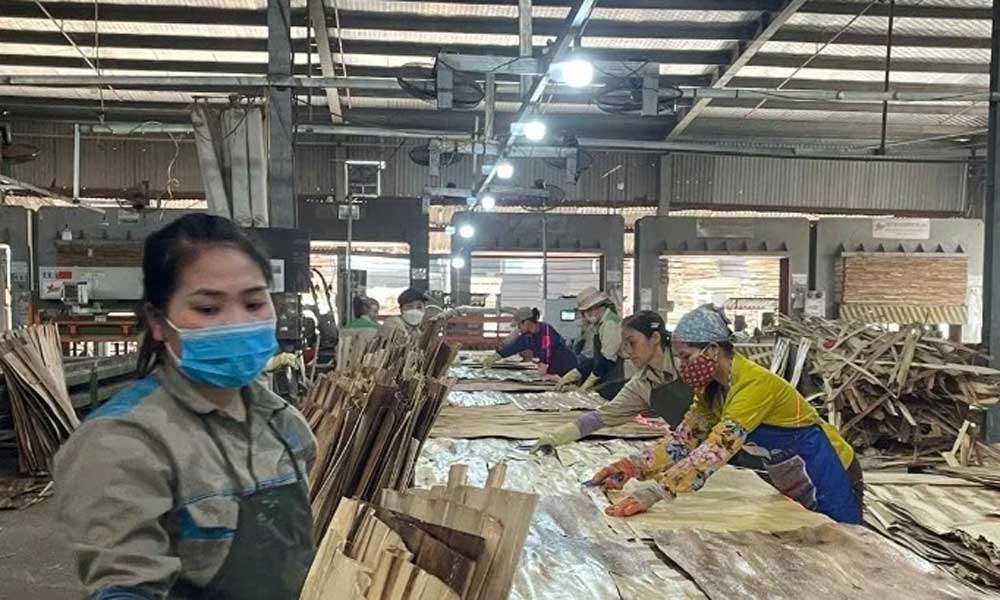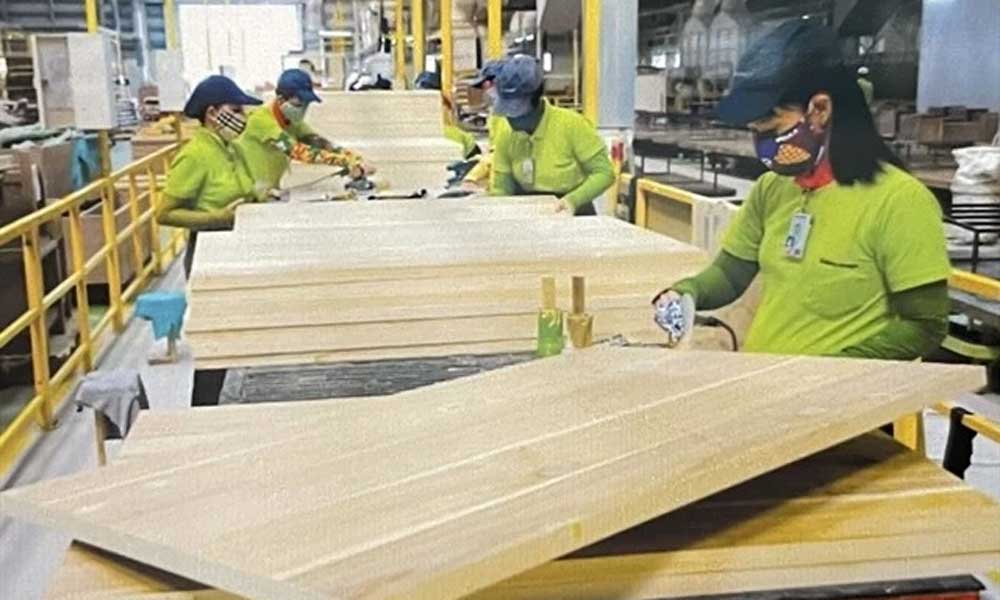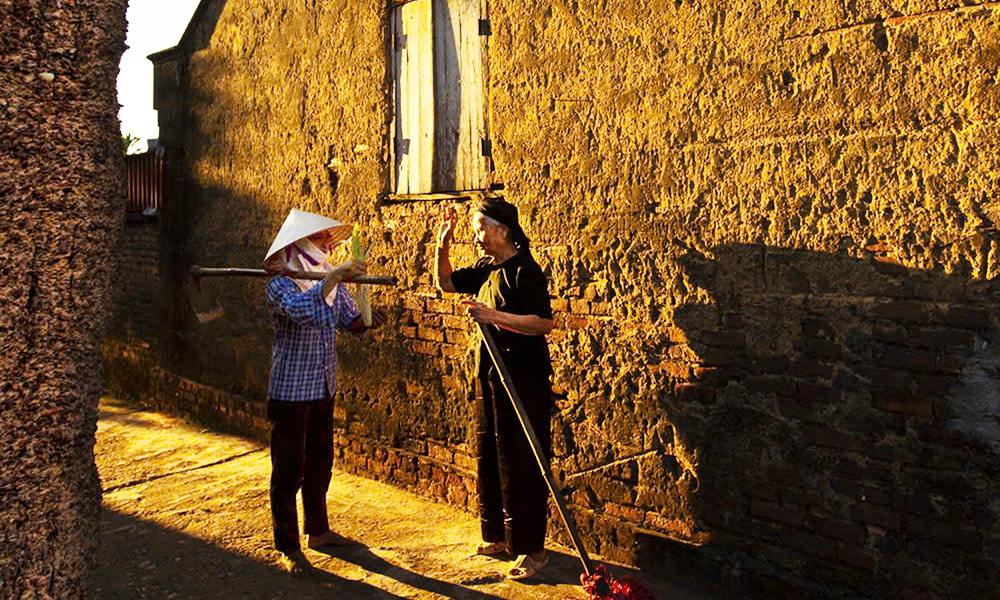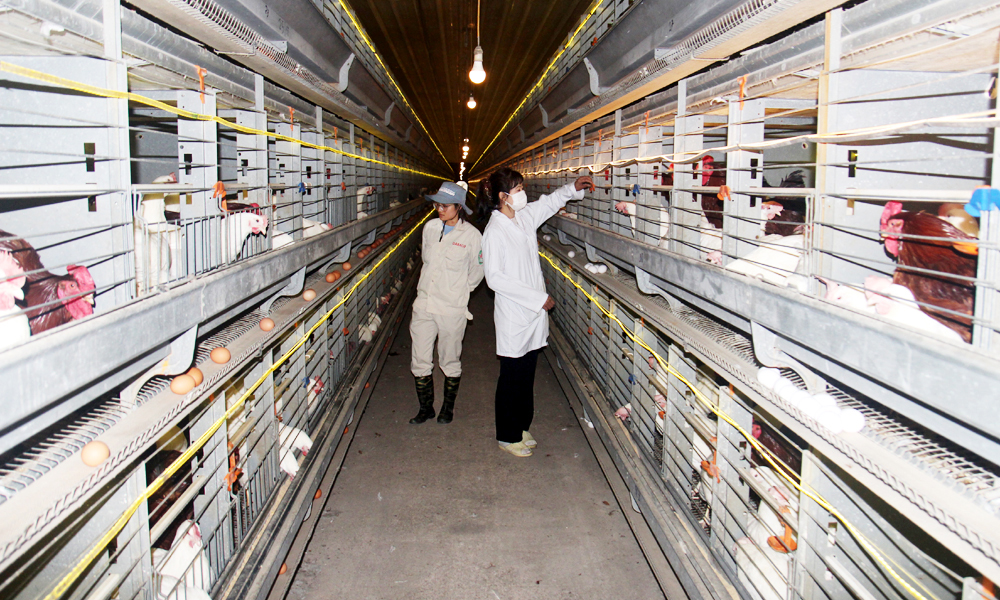Wood industry proactively reduces impact from tariff policy
According to the Ministry of Agriculture and Environment, if the US imposes reciprocal tariffs on Vietnam, orders could immediately decline. High tariffs will cause wood products from Vietnam to lose their competitive advantage, and customers will seek supplies from countries with lower tariffs. In the long term, this will narrow Vietnam’s wood export market, and the value of forestry exports is at risk of decreasing significantly.
Information from the Ministry of Agriculture and Environment showed that the value of forestry exports to the US in 2024 reached 9.417 billion USD, accounting for 54% of Vietnam’s total forestry export revenue.
 |
|
Producing plywood for export at Son Thuy Joint Stock Company, Hoa Binh province. |
In the first 3 months of 2025, it is estimated to reach 2.122 billion USD, an increase of 7.76% compared to the same period in 2024.
If the full tax rate of 46% is applied, the cost of producing wood and wood products in Vietnam will increase by about 4.14 billion USD per year, thereby increasing the cost and reducing the competitiveness of Vietnamese wood products in the US market.
Currently, Vietnam’s wood and forest product processing enterprises are mainly small and medium-sized enterprises, many of which operate on a household scale.
This makes it difficult to master the entire supply chain, invest in modernizing the production and processing process to reduce input costs and reduce product prices.
In addition, the source of raw materials for wood production and forest product processing is also a disadvantage.
Having to import raw materials leads to increased product prices, reducing the competitiveness of Vietnamese wood and forestry products with other wood export markets in the world.
According to Vice President and General Secretary of the Vietnam Timber and Forest Products Association Ngo Sy Hoai, wood and forestry products are more affected than other industries because, on March 1, 2025, they were subject to an investigation into the impact of lumber imports on US national security.
This investigation was conducted under Section 232 of the Trade Expansion Act of 1962, which allows the US President to impose import restrictions if an imported product threatens to harm national security. Vietnam has about 10% of the total export turnover to the US in this product group, he noted.
According to the Director of the Department of Forestry and Forest Protection Tran Quang Bao, the announcement from the US side showed that some items of fuel wood, wood chips, wood pellets, charcoal, logs, sawn timber, boards... will be subject to reciprocal taxes.
Some wood products for interior and exterior furniture, construction wood products and other wood products have not been subject to reciprocal taxes, these items are being investigated to determine the impact of the import of logs, sawn timber and wood products (such as paper, furniture and wooden cabinets) on national security. For wood products subject to this investigation, the time for the US President to make a decision is about 270-360 days.
To proactively minimize the negative impacts from US policy adjustments on all wood products, Bao said that the Department of Forestry and Forest Protection is actively monitoring the US trade policy adjustments and the response measures of US trading partners. The Department promptly assesses the impacts and proposes solutions to limit negative impacts on Vietnam’s wood processing industry.
The Department of Forestry and Forest Protection has coordinated with relevant units to closely monitor the US Department of Commerce investigation into the threat to national security from the import of logs, sawn timber and wood products to have timely and appropriate solutions for Vietnam’s wood processing industry.
The Department continued to coordinate with relevant units to effectively implement the commitments with the US in the Legal Timber Agreement; Memorandums of Understanding and Letters of Intent on cooperation in the forestry sector with the US.
In addition, the Vietnam Timber and Forest Products Association also proposed that the Government consider a fiscal and monetary support package equivalent to the COVID-19 pandemic period to reduce difficulties for businesses because this is an industry that uses a lot of human resources, high labor costs, and a small profit margin.
Orders are decreasing, the US market is shrinking, product prices are increasing, leading to a decrease in demand, and the competitiveness of Vietnamese goods is decreasing. These things will affect liquidity, and some businesses are even at risk of liquidity failure.
According to Hoai, Vietnamese wood is currently exported to 161 countries and territories, but in recent years, businesses have focused too much on the US market and have not paid due attention to market diversification. In the current context, market diversification needs to be considered and raised more appropriately.
He analyzed that previously, Vietnam only exported wood chips and wooden furniture to Japan. Now Vietnam needs to research deeply processed products to supply to this market because Japan is a potential market for exporting wooden furniture.
Regarding the Chinese market, previously only wood chips were exported, but through research, Chinese people are also very interested in Vietnamese rattan and bamboo products.
The Korean market previously only exported plywood and wood pellets, this market is very favourable in terms of logistics transportation for businesses to promote the export of other forest products.
As for the European Union (EU), it is also very favourable thanks to the EU-Vietnam Free Trade Agreement (EVFTA), but exports to this market only account for 3.8-4% of total wood export turnover.
A series of other markets such as the UK, Russia, the Middle East, South America or ASEAN also have a lot of potential that has not been exploited or exploited. These are markets that businesses need to research soon to make up for the shortage when the US market imposes reciprocal tariffs.
The domestic market with more than 100 million people will be a good channel for product consumption if businesses have better distribution policies and invest in research to meet the needs of urban and rural residents.
Deputy Director of Son Thuy Joint Stock Company (Hoa Binh province) Nguyen Thi Thu Huong said that when there was information that the US increased import taxes on wood products entering the market, businesses were very worried, even though the US was not yet the main market.
In the coming time, to ensure revenue and jobs for workers, the company has increased trade promotion activities at home and abroad, looking for markets for consumption and sustainable exports.
In parallel with finding solutions, diversifying markets, and reducing input production costs, in the long term, wood industry enterprises need to change their business models.
They need to shift from mainly processing according to importers’ orders to proactively designing and building brands, to increase business efficiency and profit margins.
 Bắc giang
Bắc giang













Reader's comments (0)